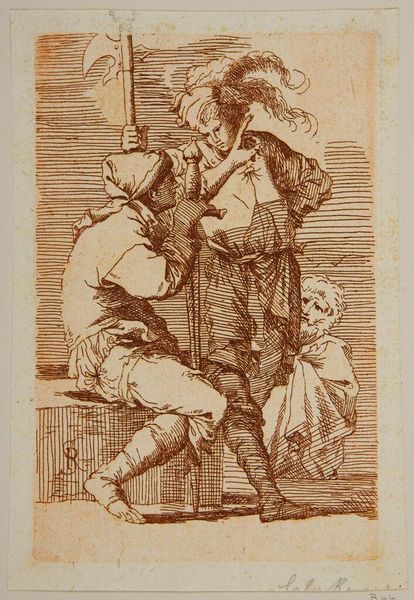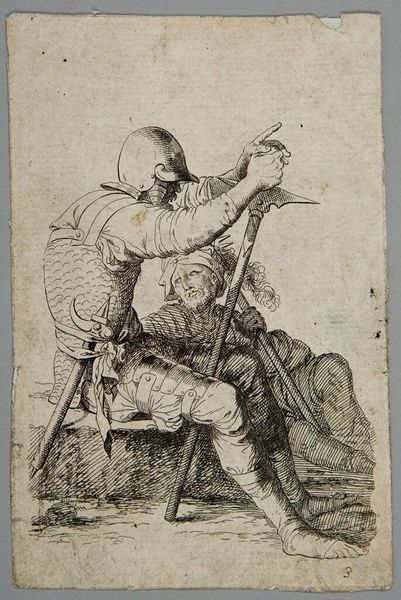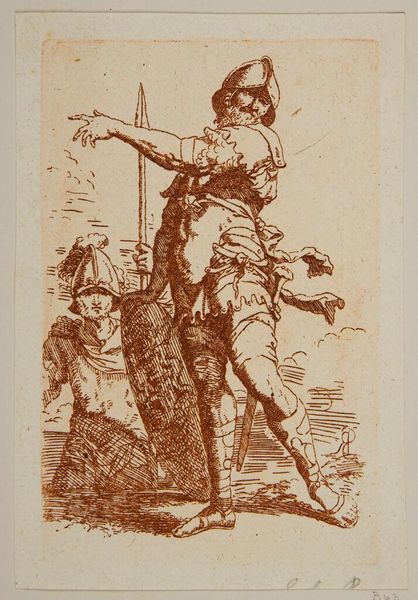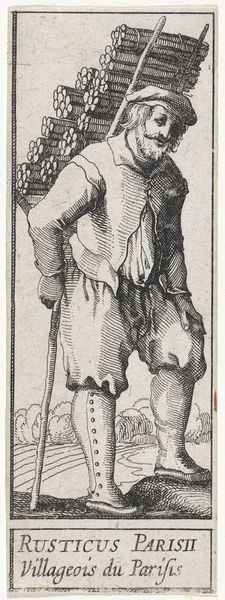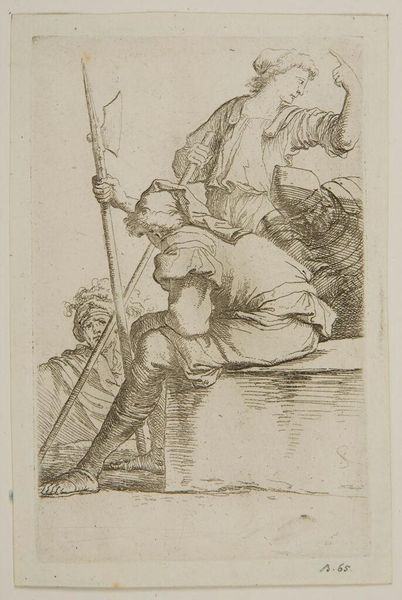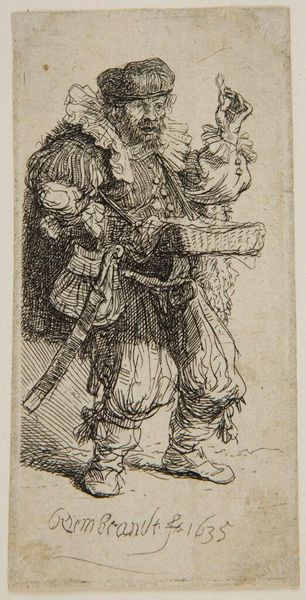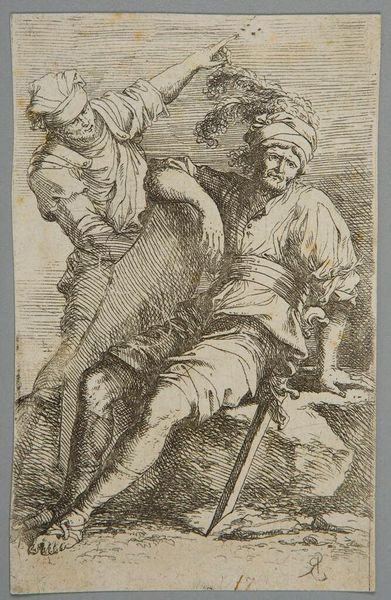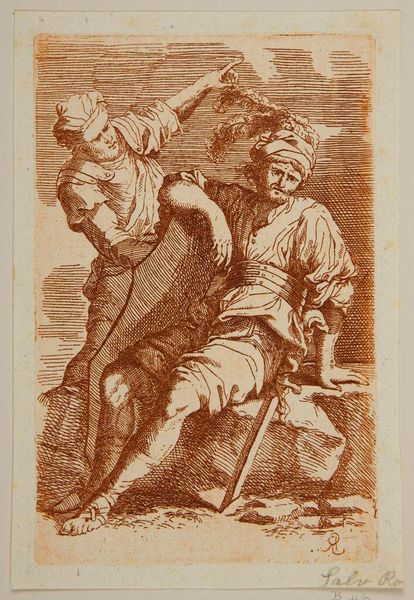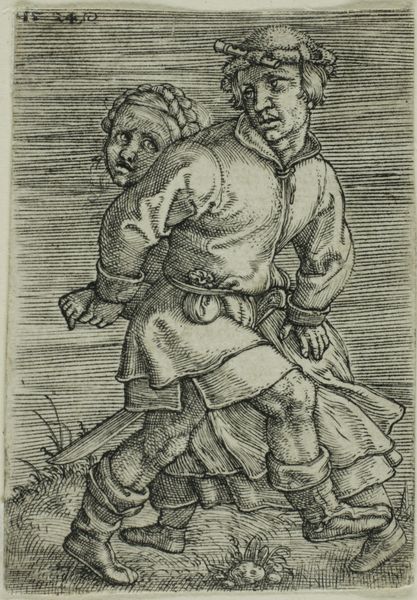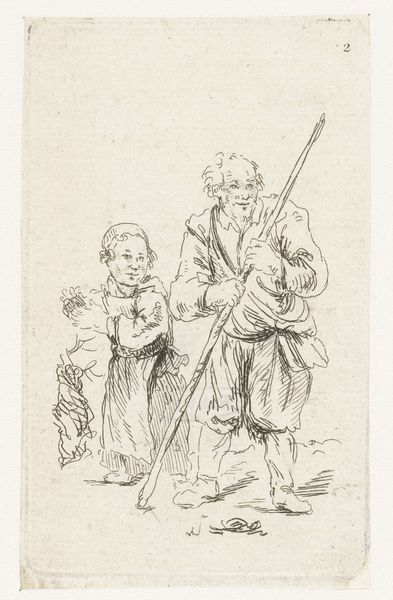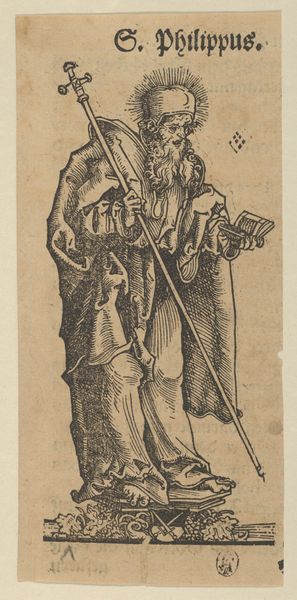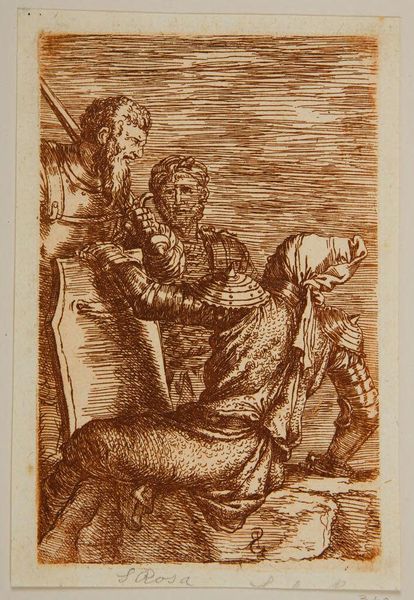
Copyright: CC0 1.0
Curator: Salvator Rosa, the 17th-century Italian artist, created this etching, "Copy after the Figurine," now residing at the Harvard Art Museums. Editor: The stark lines create a rather imposing presence. The figures seem caught in a moment of intense drama. Curator: Indeed. Rosa often engaged with themes of rebellion and the lives of bandits, reflecting the tumultuous political climate of his time. His art was popular among those critical of authority. Editor: I see that play of light and shadow used to sculpt the figures and amplify their emotional intensity. It's really quite striking. Curator: Rosa challenged academic conventions and cultivated a reputation as an independent spirit, influencing later generations of artists who valued expressive freedom. Editor: Yes, and the raw, almost unfinished quality of the etching really enhances that sense of freedom and the rejection of rigid artistic rules. Curator: His prints, like this one, circulated widely, spreading his politically charged imagery and solidifying his legacy as a rebellious figure. Editor: Looking closely, one can truly appreciate the way Rosa used line and tone to create such a compelling sense of depth. Curator: Rosa’s work really shows art's role in communicating dissent. Editor: And the power of formal elements to stir emotions.
Comments
No comments
Be the first to comment and join the conversation on the ultimate creative platform.
